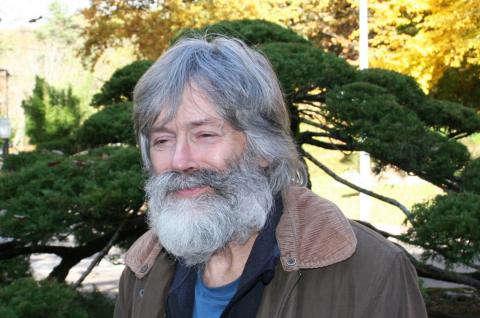
François Michel, a specialist in molecular genetics... and butterflies!
A research director emeritus at France's national center for scientific research (CNRS), François Michel has been awarded the "State Founded Prize" by the Académie des Sciences in honor of his long research career at the Institute for Integrative Biology of the Cell, otherwise known as I2BC (CEA/CNRS/Université Paris-Sud). Known for his unconventional research methods, François Michel specialized in molecular genetics starting in the 1970s and indulged his passion for entomology in his spare hours.
In 1969, when François Michel arrived at France's center for molecular genetics – which morphed into I2BC in 2015 – he was given carte blanche by Piotr Slonimski, one of its founders. This unfettered approach would become his hallmark. At the end of 1981, he joined the team of Bernard Dujon, today a member of the Académie des Sciences ("Section de Biologie Moléculaire et Cellulaire, Génomique"). At this point, François Michel oriented his research work towards ribozymes, which Tom Cech had just discovered by accident in the United States. "We were looking at a new class of catalytic molecules. We already knew about enzymes, the established dogma being that all enzymes were proteins. Now we were realizing that natural ribonucleic acid (RNA) molecules could also exert catalytic effects. This cast a whole new light on the origins of life," he explained.
A new class of molecules
François Michel was studying the same class of molecules as Tom Cech – a particular type of introns, i.e. the noncoding regions of a gene transcribed into RNA then removed. Together with his colleagues Bernard Dujon and Alain Jacquier, he published an article predicting their secondary structure based on theoretical reasoning. "I was more of a theoretical, rather than experimental, investigator," he commented. "Thanks to programming, I was one of the first to analyze intron sequences in which I observed a preserved structure, but without knowing that they were catalytic." He followed through with a second article "pointing out that Cech's molecule possessed the structure that we'd just predicted." A few years later, working with Eric Westhof, now a member of the Académie des Sciences, François Michel predicted its tridimenstional structure, which crystallography would subsequently verify. In 2016, he co-published the complete crystallographic structure of a second class of catalytic introns in Science magazine with his wife Maria Costa and their research team.
The predictability of butterflies
Throughout his career, François Michel followed an unconventional modus operandi. "I'd use my intuition to try to find the correct solution to a problem, then provide experimental proof validating my findings." François Michel made several stays as a visiting research scholar at top laboratories in the United States, publishing notable articles based on his "excellent experiences" and his drive to be the first to understand. All in all, he published about eighty articles, including some that were cited more than 500 times.
However, this perfectionist – who says that humility is his best policy, coming from a family of brilliant scientists – says that, "in the final analysis, writing can sometimes be a waste of time." Today, the drive to understand, which inspired him to become a researcher in the first place, has landed him back in the lab as researcher emeritus, indulging his passion for entomology at the museum of natural history in Paris. François Michel, who has lovingly collected butterflies since childhood, is busy studying the formation of species, endeavoring to prove their regularity and predictability.
François Michel

